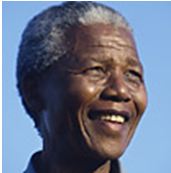Parallels Between USA and South Africa
The USA and South Africa are oceans apart in geography, culture and history. And yet, as someone who was born in South Africa and lived there for more than half my life, and who is now a US citizen, I see several fascinating parallels. Today South Africa is struggling to overcome a terrible history of racialism and oppression that still lingers and holds progress back. The USA has its own unenviable history in this regard, and is also still struggling to rise above this and move forward as one nation. South Africa is currently going through huge political, cultural and economic changes. So is the USA. Unemployment is a serious problem for South Africa as it is for Americans. The people of South Africa are angry; they want to be heard; they want real and relevant change. This also describes the people of the USA. The large majority of government, political and business leaders in South Africa are faced with the challenge of having to transform their leadership style to one that is more inclusive, collaborative, transparent and authentic. The leaders in the USA are faced with the same challenge.
 Nelson Mandela Leadership Style
Nelson Mandela Leadership Style
My recommendation is to look at the leadership style of Nelson Mandela for answers to these troubling challenges. After 27 years of incarceration on Robben Island, hard labor and mistreatment at the hands of his white prison guards, Mandela became the first black President of South Africa and abandoned apartheid.
The courage, vision and fortitude of this man are legend. But today I would like to look at four of Nelson Mandela’s leadership skills and provide a compelling argument for why the world needs these leadership skills today.
____
1. Lead From the Back
As a boy, Mandela was greatly influenced by Jongintaba, the tribal king who raised him. When Jongintaba had meetings of his court, the men gathered in a circle, and only after all had spoken did the king begin to speak. The chief’s job, Mandela said, was not to tell people what to do but to form a consensus. “Don’t enter the debate too early,” he used to say.
I think that more than ever before, people now want to be recognized for the value they bring to the table. They want to be heard. And they want their leaders to listen! This means that if leaders are going to move in sync with where the people are, they will need to remember Mandela’s words when reminiscing about his boyhood and herding cattle. “You know,” he would say, “you can only lead them from behind.”
2. Lead with the Knowledge that ‘Nothing is Black or White.’ (no pun intended)
Mandela acted on the belief that life is never either-or; right or wrong; black or white. He understood that decisions are complex; that there are always competing and complicating factors; that nothing is ever as straightforward as it appears; that the leader does not have all the answers or the best answer.
Think about how dramatically our worlds have changed today. What we took for granted as being our reality is no longer the same. Everyone is loudly expressing their different needs, feelings and perceptions. More than ever leaders need to think like Mandela – they need to be comfortable with contradiction; they must be able to listen and they must invite authentic dialogue and debate. When they do these leaders will not fall into either-or thinking and will make profoundly and fundamentally better decisions.
3. Quitting is Leading Too
Knowing how to abandon something that is not working, a failed idea, goal or relationship is often the most difficult kind of decision a leader has to make. This takes enormous courage. In the history of Africa, there have been only a handful of democratically elected leaders who willingly stood down from office and did not hold the country hostage. Mandela was determined to set a precedent for all who followed him by choosing to set the course but not steering the ship forever. He understood that leaders lead as much by what they choose not to do as by what they choose to do.
has to make. This takes enormous courage. In the history of Africa, there have been only a handful of democratically elected leaders who willingly stood down from office and did not hold the country hostage. Mandela was determined to set a precedent for all who followed him by choosing to set the course but not steering the ship forever. He understood that leaders lead as much by what they choose not to do as by what they choose to do.
We are seeing leaders in business and government in the USA today, who are holding on tightly to outmoded goals,policies, approaches and opinions. It is time for such leaders to catch up with how the world has changed, listen to the people, and change their perspectives accordingly – or else make way for those who can.
4. Be Humble about your strengths and honest about your flaws.
Mandela had a deep understanding of himself. He knew that although he was a great leader, he was also a man of flesh and blood; of weaknesses and flaws. He was willing to own up to his flaws and worked hard at triumphing over them. He also understood his weaknesses and found ways to make sure that he compensated for them.
We don’t see a whole lot of this kind of honesty and humility in too many leaders today. What we do see a lot of is leaders who choose not to look in the mirror and as a result are in denial about the fact that their weaknesses are getting in the way of real change and progress.
Would you agree that the world would be a better place today if the bulk of those who call themselves leaders applied Mandela’s leadership gifts? I’d love to hear your thoughts.
![]()


I am writing spiritual leadership in SA and would like to have open communication with you. You can check my website. Please respond.
His commitment, He Never give up his goal to be achieved, Compassion for others, Simplicity, Down to earth. These are few important things out of many leadership qualities display by the Nelson Mandela when comparing with today’s leaders.
My brother recommended I may like this blog.
He used to be entirely right. This submit actually made my day.
You can not consider just how so much time
I had spent for this info! Thank you!